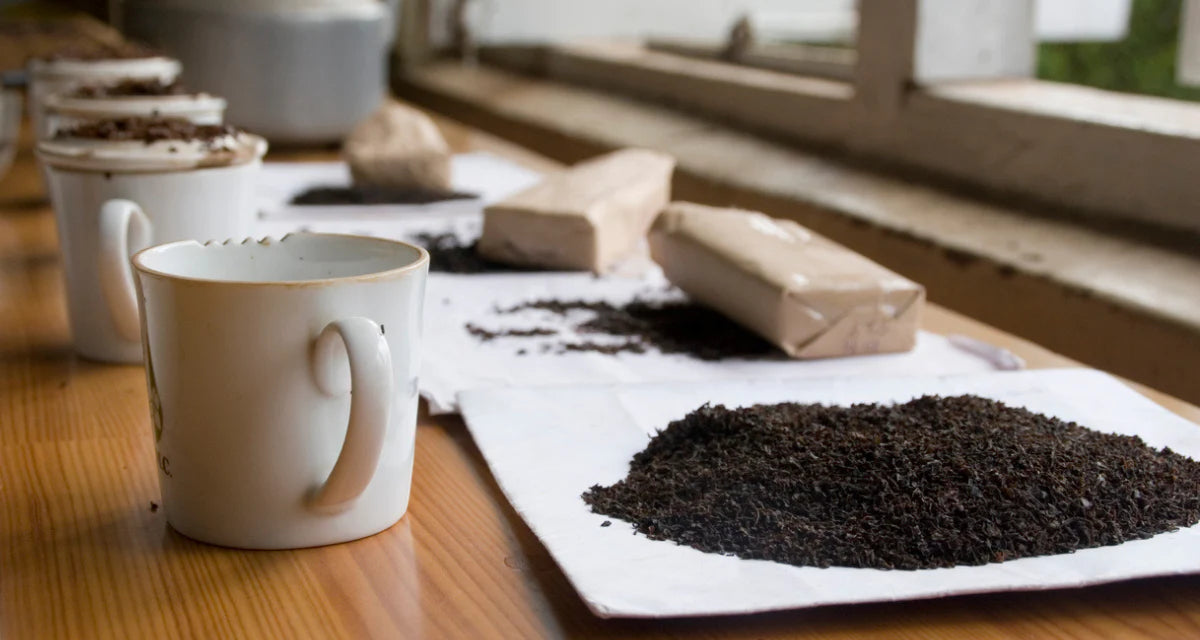All about Orange Pekoe Tea
Orange pekoe is part of a classification system for black tea, based on the origin, quality and size of the...

WHAT IS ORANGE PEKOE TEA?
Names can be deceiving. You’d be forgiven for assuming that orange pekoe tea is a flavour or blend of tea – or simply the colour of the tea. Surprisingly, however, orange pekoe tea is not orange, neither does it smell nor taste of oranges. It’s not a specific blend of tea, either.
Instead, orange pekoe is part of a classification system for black tea, based on the origin, quality and size of the leaves. Orange pekoe, then, is a particular grade of black tea. Orange pekoe on the label is a gauge of premium quality and signifies that the tea consists of whole loose leaves only.
The grading system, which applies to the final, sorting stage of tea production, comprises five categories that indicate different leaf sizes and tea strengths. For simplicity’s sake, we’ll stick to two grades here: orange pekoe (OP) and flowery orange pekoe (FOP), as they are the two grades most similar to what we use in our limited-edition teas. To call it pekoe, the tea must comprise only the leaf bud and its two youngest leaves. This segment of the tea leaf is known as a flush.
- Flowery Orange Pekoe – produced from the tip of the bud of the tea plant and the two youngest leaves of each shoot.
- Orange Pekoe – a whole-leaf tea that shows no tip. The leaves may be full, or they can be broken, which is referred to as broken orange pekoe (BOP). Sometimes this type of tea has a smaller leaf.
WHY IS TEA CALLED ORANGE PEKOE?
The history behind the name ‘orange pekoe’ is a bit vague, but a couple of theories have emerged based on facts we know. One school of thought is that orange pekoe comes from a Chinese word for a special Chinese tea that boasts white, downy hairs on the tips of the youngest and smallest tea leaves on the plant. (Funnily enough, though, Chinese black teas typically don’t use this tea grading system.)
Another theory attributes the term to the famed early-17th-century Dutch East India Company, a massive trading enterprise of the time. The Dutch royal family belonged to the House of Orange. The Dutch East India Company brought teas to Europe, setting aside the best black teas for the royals. The story goes that when this tea became accessible to the public, people nicknamed it the 'orange' pekoe for its association with the royal family.
Regardless of its heritage, tea drinkers of the Western world generally use the term ‘orange pekoe’ for black teas from India, Sri Lanka and elsewhere in Asia.
WHAT DOES ORANGE PEKOE TEA TASTE LIKE?
The tea master, who blends the tea, and the origin of the tea very much determine the flavour profile of orange pekoe tea. Orange pekoe tea often has a deep and intense flavour profile.
HOW TO MAKE ORANGE PEKOE TEA
Our range of orange pekoe tea comes in loose-leaf format. For a delicious cuppa, use about 3 grams of tea leaves (a bit less than a teaspoon) for every cup of boiling water, and steep them for approximately three to five minutes, depending on your preferred strength. Drink it with or without milk.
NERADA DIRECTOR'S CUT 50TH ANNIVERSARY TEAS
- Director’s Cut Original Black Tea – A single-origin orange pekoe loose-leaf blend with rich aromas and full-bodied liquor. Drink it with or without milk.
- Director’s Cut Sunrise Black Tea with Lemon Myrtle - is a single-origin flowery orange pekoe loose-leaf tea carefully blended with lemon myrtle. Rolled in the ancient way, this delicious aromatic brew has an underlying flavour of Australian lemon myrtle. To enjoy the subtle flavour, we recommend drinking it without milk.
- Director’s Cut Indulge Black Tea with Cocoa - is a rich, chocolatey blend of our single-origin orange pekoe loose-leaf tea, that combines cocoa to make a velvety and malty blend.
These blends are only available on our online store.

